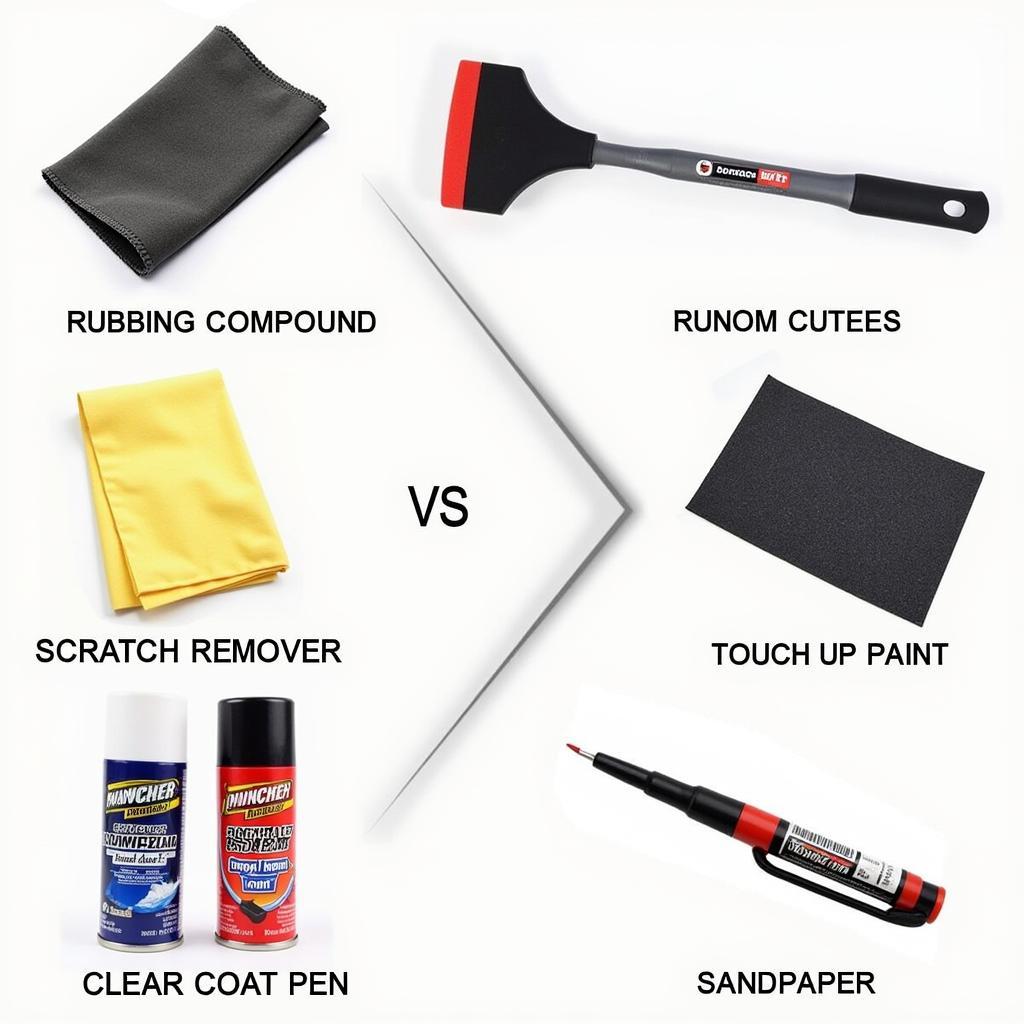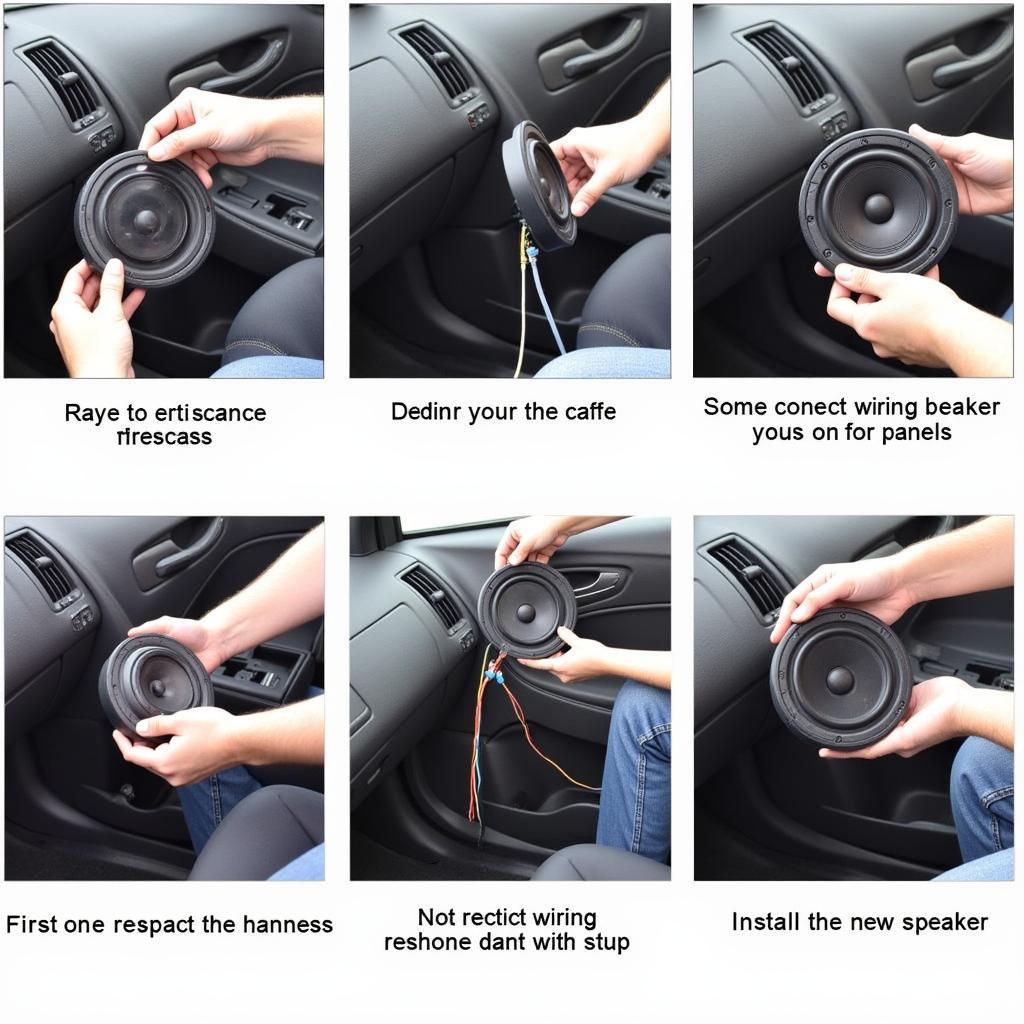Discovering a paint scratch on your car can be a real downer. But before you start panicking, take a deep breath! It’s a common problem and, depending on the severity, there are effective DIY solutions to restore your car’s appearance without breaking the bank. This comprehensive guide will walk you through everything you need to know about how to fix a paint scratch on a car, from assessing the damage to achieving a professional-looking finish.
Assessing the Damage: Is it a Scratch or Something More?
Before you grab your tools, it’s crucial to understand the extent of the damage. Not all car paint scratches are created equal.
- Clear Coat Scratches: These are the most superficial scratches, affecting only the clear coat – the protective layer that adds shine and UV protection. They appear white or lighter than your car’s paint.
- Paint Scratches: These go deeper, penetrating the clear coat and damaging the color layer. You’ll see the actual color of your car underneath the scratch.
- Primer Scratches: These expose the primer layer beneath the paint, usually appearing gray or white.
- Deep Scratches: These reach the bare metal of your car, increasing the risk of rust and corrosion.
 Car Paint Scratch Repair Kit
Car Paint Scratch Repair Kit
Knowing the depth of the scratch will help you determine the best course of action. For minor scratches, a simple DIY fix might suffice. However, deep scratches often require professional attention.
DIY Solutions for Minor Scratches
For clear coat and minor paint scratches, you can often restore your car’s appearance with some readily available products and a bit of elbow grease. Here’s a step-by-step guide:
1. Clean the Area: Thoroughly wash the scratched area with car wash soap and water to remove dirt, grime, and wax residue. This ensures optimal product adhesion.
2. Assess the Scratch: After cleaning, examine the scratch under good lighting. You might be surprised to find that some “scratches” are just transferred paint or contaminants that can be removed with a clay bar.
3. Choose Your Weapon:
- Rubbing Compound: For light scratches, a rubbing compound can effectively polish away imperfections. Apply a small amount onto a microfiber cloth and gently rub it over the scratch in a circular motion.
- Scratch Remover: If the rubbing compound isn’t enough, try a dedicated car scratch remover. These products are formulated to level out minor scratches and restore the paint’s shine. Follow the manufacturer’s instructions carefully.
how to fix peeling car door handles
4. Apply with Care: When using any abrasive product, less is more. Apply gentle pressure and avoid excessive rubbing, as this can damage the paint further.
5. Check Your Progress: Periodically wipe away the product and inspect the scratch. Repeat the process if necessary until you achieve the desired results.
6. Wax On, Wax Off: After fixing the scratch, it’s essential to protect the area by waxing your car. This creates a protective layer and helps maintain the shine.
Dealing with Deeper Scratches
For deeper scratches that expose the primer or bare metal, DIY repairs might not be sufficient. It’s best to consult with a professional auto body shop for these reasons:
- Rust Prevention: Exposed metal is susceptible to rust, requiring prompt treatment to prevent further damage.
- Color Matching: Matching touch-up paint to your car’s exact color can be tricky. Professionals have access to color-matching tools and techniques for a seamless finish.
- Professional Finish: Deep scratch repair often involves sanding, filling, priming, and painting, which requires specialized skills and equipment.
 Car Paint Scratch Repair by Professional
Car Paint Scratch Repair by Professional
Preventing Future Scratches
While some scratches are unavoidable, proactive measures can help minimize the risk:
- Regular Washing: Wash your car regularly to remove dirt, grime, and contaminants that can cause micro-scratches.
- Use Microfiber Cloths: Always use soft, clean microfiber cloths when washing or drying your car to avoid scratching the paint.
- Park Strategically: Park in well-lit areas away from shopping cart traffic and careless door swings. Consider using a garage or car cover when possible.
- Touch-Up Scratches Promptly: Address minor scratches as soon as possible to prevent them from worsening due to exposure to the elements.
“Preventing scratches is always easier than fixing them,” advises John Miller, an experienced automotive technician. “By taking simple precautions and addressing minor issues promptly, you can maintain your car’s pristine appearance for years to come.”
Conclusion
Learning how to fix a paint scratch on a car can save you money and keep your vehicle looking its best. While DIY solutions are effective for minor scratches, it’s crucial to recognize when professional help is necessary. By assessing the damage accurately and following the appropriate steps, you can restore your car’s paint and protect it from further damage.
Need help with a stubborn car scratch? Contact AutoTipPro for expert advice and assistance.
Phone: +1 (641) 206-8880
Office: 500 N St Mary’s St, San Antonio, TX 78205, United States
FAQs
1. Can I use toothpaste to fix car scratches?
While toothpaste contains mild abrasives, it’s not a recommended solution for car scratches. Toothpaste is designed for teeth and can potentially damage your car’s paint.
2. How much does it cost to fix a deep scratch on a car professionally?
The cost of professional scratch repair varies depending on the severity, location, and your car’s make and model. It can range from a few hundred dollars for minor repairs to over a thousand for extensive damage.
3. Can I use nail polish to touch up a car scratch?
Using nail polish is not recommended. It’s not formulated for automotive paint and can react negatively, causing further damage and an uneven finish.
4. How do I know if a scratch needs professional attention?
If the scratch exposes the primer or bare metal, it’s best to consult a professional. These scratches require specialized techniques and materials to prevent rust and ensure a seamless repair.
5. What’s the best way to remove light scratches from my car?
A rubbing compound or a dedicated car scratch remover, applied with a microfiber cloth, can effectively remove light scratches. Remember to work gently and avoid excessive rubbing.





Leave a Reply